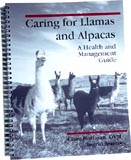I am not an expert on BVD (bovine viral diarrhea). I hope I never have to become one. The people I know who are experts are either vets or breeders who have had a breakout on their ranch. So I repeat, I’m happy in knowing just what I need to know and letting my vet shoulder the burden for the rest.
With her, I’ve defined a protocol for ensuring I can retain my state of blissful semi-ignorance. I’m sure there are people who have tighter biosecurity than I do but plenty who have less. We all have to decide what we can and cannot accommodate to strike the comfortable balance between manageability and peace of mind. And that’s all I’m striving to do here. Things I’ve defined as totally outside my control I’ve decided to ignore – these include constraining the movements of my cats from pen to pen, stressing over whether flies or mosquitoes can transmit the disease, and endlessly pondering whether BVD could spread airborne, all current possibilities. Once again, the words blissful semi-ignorance are key here.
Rule #1: No nose to nose contact with any animals that may have been exposed.
These include animals that have been on transport, at shows, or at another ranch. These animals go into quarantine for three weeks, the amount of time it takes an acute infection to run its course and convert to titres. Do I maintain the recommended 30 foot buffer between quarantine and my regular herd. Nope. It’s a limitation I live with because of how my layout was originally designed. I’ll have the possibility to provide that much distance in my new paddocks that I’m putting in next year. Sometimes I test an animal that’s in quarantine but in that case, I have both a PCR and a serology done. One tells me if I have an acute infection from whatever put them in quarantine in the first place (PCR) and the other (serology) tells me if they ever have. This assumes I have a previous PCR that proves the animal is not PI (persistently infected).
Rule #2: Test after every event that matters
What the heck does that mean? I’m trying to state that I test for BVD titres after every exposure that could impact a next action. For instance, I test each animal I purchase for exposure when it arrives to establish a baseline so that if a test is positive later, I know it has happened since they arrived. I test each female who returns from an outside breeding after she emerges from quarantine so I know before the baby is born if I have a risk of a PI cria. I don’t test each cria after each show but do try to test after the last show for females if they are leaving for an outside breeding. Make sense? Of course, each newborn is tested for BVD with a PCR test, but if I’ve followed the exposure rule, I pretty much know if the dam has had any opportunity to expose the fetus.
Rule #3: Isolate clothes and equipment for quarantine
Winter quarantines are horrible. There’s nothing like changing clothes and shoes in an unheated barn when it’s below zero. But if you’re going to quarantine, you might as well do it right and that means a change of clothes, shoes, and work gloves when going between the barn and the quarantine. It’s just easier to have duplicate supplies of everything in quarantine, including feed and hay. If I have to reuse the quarantine without having tested the previous inhabitants, then I bleach down the walls, feeders, and equipments and spread a layer of hydrated lime on the ground. If I have a serology done on one of the inhabitants before the next ones go in and it comes up negative, then I just do a normal clean up.
Rule #4: Follow common sense
Everything else falls under the “how do I feel about it” category. For instance, do I make very person stomp on my biosecurity mat filled with Nolvasan and scrub down their hands? No. For strangers, shearers who go farm to farm, people I don’t know too well – yes. For people I trust, they know to come with clean shoes and clothes and I ask them just to check. In reality, the guidelines for disinfection are that the liquid (bleach, nolvasan) has to be in contact with your shoes for ten minutes before it does its magic and wipes out any lurking viral agents. I know no one has never asked me to stomp or dip and then stand outside for that long. But I still use a mat- it can’t hurt. And I have plastic booties on hand. If I ever had a large horde of people going through, plastic shoes would be the way to go to be safe. It’s all relative to your assessment of the risk.
Like I said, I’m no expert. This is what I do to straddle that fine line between feeling safe and not tearing my hair out. As always, consult your vet.



